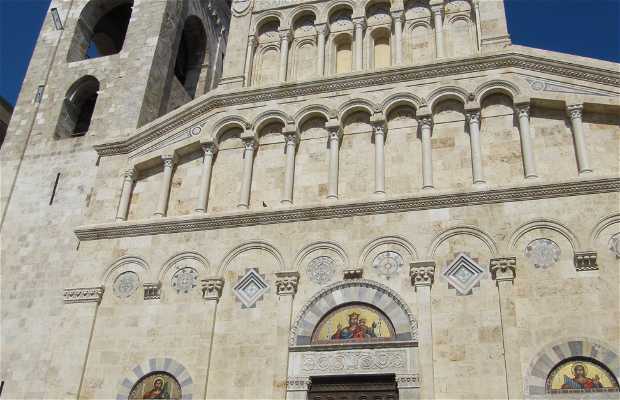Sanctuary of the Martyrs
For me, the interior of the St. Mary and St. Ceclia Cathedral in Cagliari is one of the most amazing places in the entire city. The polychromed marble interior creates some truly beautiful images which evoke the majesty of Siena Cathedral (despite the distance between the two, of course). The interior is shaped like a Latin cross and has three naves and various lateral chapels. At the entrance, there are two wells of holy water dating back to the 17th century. The flooring, re-built in 1956 according to the original 17th-century design, is also made of polychromed marble. The vaults of the main nave have frescos depicting the exaltation of the cross, the history of Christianity’s spread through Sardinia, and the Piety. All were done by artist Filippo Figari (1885-1975).
There are various underground chambers below the cathedral floor, the majority are used as tombs for local archbishops, nobles, viceroys, and saints, and are off-limits to visitors. The most notable part of the underground vaults is the Sanctuary of the Martyrs, conveniently also the only chamber open to the public. It was carved into the bedrock at the orders of the Archbishop Esquivel in the early 17th century and finished in 1618. It contains 179 nooks which hold various relics from the martyred saints buried in the early Christian cemeteries of Cagliari. The sanctuary has three chapels: that of the Virgin of the Martyrs, Lucifer of Cagliari, and St. Saturnine, all done in a mixture of Baroque, Renaissance, and Neo-Classical styles and covered in marble. The chamber also serves as the tomb of certain members of the House of Savoy, rulers of Sardinia from 1730 to 1861. In the cathedral’s interior, you can also see the famous polychromed Baroque altars, funerary monuments to the archbishops and viceroys, the mausoleum of Martino Il Giovane, King of Sicily, and various accessories made of silver.




















